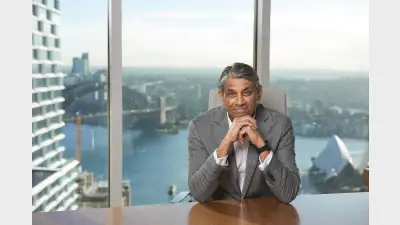Robo 2.0: Threat or opportunity?



Ten years ago, the advice industry discovered the first iterations of ‘robo advice’ and the potential threat it posed to their livelihood. A decade later, a new generation of robo investing and robo advice services have launched, targeting younger and less-wealthy consumers, although none yet offer full advice.
While the initial threat had dissipated, these new type of ‘Robo 2.0’ services could be beneficial for advisers and present an opportunity for them to engage with clients in a world where consumers prefer to manage their finances digitally.
ONLINE APPS
During the recent pandemic, the rise in household savings and consumers having more time on their hands led to growth in usage of online apps such as Raiz, Spaceship, and Stockspot.
Micro-investing platform Spaceship, which launched in 2017, had $1 billion in funds under management at the end of June 2021, up from $415 million in June 2020. Meanwhile, users had almost quadrupled from 50,000 in 2019 to 190,000.
Spaceship chief executive, Andrew Moore, said: “Rather than taking punts on penny stocks or recommendations from their mates, Spaceship’s customers have taken the route of setting up a regular investment plan in one of our managed funds, offering an ongoing investment opportunity in a variety of domestic and international companies
“Micro-investing apps such as Spaceship Voyager give new investors the opportunity to witness firsthand the benefits of time in the market versus timing the market, a crucial component in building wealth.”
Commentators praised the way these types of platforms had encouraged younger people to get engaged with their finances and invest with only a small sum of money. The majority of Spaceship users were investing just $50 a week, an amount seen as much more accessible for younger investors.
Stuart Holdsworth, founder and chief executive at Financial Simplicity, said: “One thing these platforms have done very well is create an interactive customer experience which allows people to invest very small amounts of money. They have compelling interfaces like graphs and bright colours and they do an excellent job”.
However, at Raiz and Stockspot, investment balances were much higher, indicating these platforms were also used by wealthier clients who might also be a viable market for financial advisers.
Savings and investment platform Raiz, which launched in 2016, said it was on track to reach $1 billion by the end of the year as it currently had $970 million, and 533,000 active monthly customers. It was also expanding beyond Australia into Asia with customers in Malaysia and Indonesia.
Raiz founder, George Lucas, said 50,000 of its users were over the age of 50 while others used it for their self-managed superannuation funds (SMSFs).
At Stockspot, which provided personalised portfolios, the average client invested over $50,000, although some balances reached as high as $5 million.
Chris Brycki, founder and chief executive, said the platform had seen new clients with larger balances compared to pre-pandemic as its seven-year track record and positive performance had helped it “build trust” with clients like SMSFs who wanted to be less active in their portfolio management.
He also highlighted low interest rates and higher savings rates meant people had more money to invest as they had been unable to spend on areas like holidays.
PROBLEMS
However, the problem with these types of services was they assumed from the outset that investment was the right option for each user and that the users already had a level of financial literacy.
Holdsworth said: “The robo experience is presuming that investment is the right thing for every user which might not be the case. It narrows the starting point to a utility function rather than starting from a blank slate and considering their overall financial circumstances.
“There is a confusion between robo products and robo advice, there is no solution yet which comes close to a full advice experience, no robo product out there would consider a person’s mortgage or superannuation yet.”
At their worst, these types of services could be considered as a form of gambling which encouraged short-term trading in order to gain maximum investment fees.
Greg Davies, head of behavioural finance at Oxford Risk, said: “Are users viewing this as something for the long-term or are they gambling? Do they understand the distinction between trading and investing for the long-term? A lot of people aren’t that sensible and that’s very dangerous”.
He suggested the platforms should introduce safety checks which would guide the users on sensible investing and introduce measures which would automatically kick-in to prevent panic selling in the event of a market downturn.
“They should show the rules of good investment and be the equivalent of a financial FitBit for people. There are lots of opportunities for these services to do good but unfortunately firms want users to be doing frequent transactions to maximise fees.”
Meanwhile, finfluencers on TikTok or YouTube who were offering financial tips presented their own problems by making ‘investing look easy’ which would pose problems when the market next went into freefall.
The Advisers Association, chief executive, Neil Macdonald said: “Finfluencers are dangerous, what they are saying makes investing seem easy.
“It is good they are creating awareness but the risk is it might not always lead to a good outcome. It’s all good when markets are going up but what if there is a market crash?”
REGULATORY FEARS
The Australian Securities and Investments Commission (ASIC) stated it was looking into retail trading and was concerned that finfluencers were offering unlicensed advice to retail investors which would be illegal.
Chair, Joe Longo, said the activities of wealth coaches and finfluencers was an “area of big concern” for the regulator.
In October, the regulator noted a “concerning” trend it had observed of social media posts being used to co-ordinate pump and dump activity in listed stocks. It noted social media was being used to “create a sense of excitement” about a stock or spread fake news.
“ASIC has recently observed blatant attempts to pump share prices, using posts on social media to announce a target stock, a designated time to buy and a target price or percentage gain to be reached before dumping the shares,” it said.
This was illegal market manipulation and could attract a fine of up to $1 million and 15 years imprisonment.
But Senator Jane Hume, minister for superannuation, financial services and the digital economy, had previously stated she was optimistic about the level of engagement these platforms created among young people and that an element of ‘buyer beware’ was at play.
“We don’t believe in establishing unworkable rail guards that inhibit progress and innovation. I have absolutely no interest in perpetuating a nanny state culture where we resort to banning things to save people from their own follies,” Hume said at a conference in September.
“I believe in personal responsibility and common sense. But for that to work, we must make sure that consumers have access to the information that they need to make informed decisions.”
She also stated financial technology was a “key and growing export for Australia” thanks to its combination of highly-banked population and user base of early adopters.
Commentators agreed anything that encouraged more investment was good, particularly as the cost of advice was rising. The average fee for initial advice often surpassed $3,000 which made it hard for younger investors to access compared to online investment which removed barriers to entry and let someone with $100 make similar investments to someone who had $10,000.
With this in mind, many asset managers had started offering versions of their funds as exchange traded managed funds as these had a lower minimum investment than a managed fund and were more attractive to retail consumers.
“If you want to see an adviser then you have to jump through a lot of hoops, yet without any checks at all, they could invest in Bitcoin. There is an imbalance where it is hard to get advice yet it is easy to gamble,” Davies said.
“Should the regulator be more strict or would that discourage people from investing? You don’t want people to be excluded from investing just because they have fewer assets.”
Lucas said: “People do get a lot of information from social media and it is something that regulators are looking into globally, not just in Australia. Most of it is good information but you only need one bad apple and that’s who the regulator will target”.
Joint managing director at Netwealth, Matt Heine, highlighted the prevalence of information on social media and sites like Reddit required a different understanding by the regulator as they had developed their own lexicon. This included words like ‘whale’ [individuals that hold large amounts of cryptocurrency], ‘diamond hand’ [an investor who holds onto shares despite losses] and ‘mooning’ [a coin or stock experiencing a spike].
“People are desperate for information and are getting it from sites like Reddit like we saw with Gamestop. They are interacting on these discussion boards and have built up this whole new lexicon which the regulator needs to understand.”
WORKING WITH ADVISERS
Rather than viewing robo products as a threat in the way they might have done years ago when these products were in their first iteration, advisers were now viewing ‘Robo 2.0’ as something they could work alongside.
Compared to the first types of services which bucketed people into categories, services available now allowed for a more personalised and tailored experience.
This was exacerbated by the emergence of the ‘emerging affluent’ generation, the next wave of clients who were used to doing their banking online and having constant access to their information.
According to Netwealth, some 1.5 million people aged 30 to 45 years old sat in this category which it defined as having higher than average income, strong appetite for investment and controlling $2.2 trillion in household wealth. Some 79% of people in this category said they were “extremely confident” to use technology with a third managing their investments online every month and 51% managing their superannuation fund online.
Lucas said: “We have advisers who look at [Raiz] and, I wouldn’t say they recommend us, but they suggest us to their younger clients who don’t need full-service advice. Customers are looking for 24/7 access to information and advisers need to do more online”.
“Advisers need to recognise the way that people are saving and investing is changing and that is being driven by the emerging affluent demographic who are engaging with their finances digitally.
“Clients are demanding a digital experience rather than a face-to-face one. The whole world moved online during the pandemic and that is the same for people’s finances,” Heine said.
Rita Da Silva, Oceania leader of wealth and asset management at EY, said: “It is highly important for advisers to embrace technology to reach the next generation coming through. Millennials and Gen Z have been digitally native for most of their lives and advisers need to engage with them.
“Most apps provide only general advice whereas advisers provide personal advice, in an ideal world, we would have a hybrid model as people do generally need access to a person.
“There needs to be a way for advisers to capitalise on the trend especially as people grow their wealth but it is on the adviser to promote their benefits and capabilities to the consumer.”
INTEGRATING TECHNOLOGY
Ways that digital advice could help businesses was by doing the “heavy lifting” for them such as automating the fact-finding process, providing an audit trail and improving access to third-party data which would allow the adviser to focus more on tasks that added value for the client.
Advisers were also encouraged to have a specific technology and data strategy which would allow them to maximise the volume of data they collected on clients and put it to best use.
Macdonald said: “Advice used to be all face-to-face and paper based but the digitally-enabled idea is how can you use technology to make the user experience great and to automate the low-value parts.”
He said it could take 20 hours for an adviser to bring on a new client once they had completed all the paperwork, research and meetings and this was an area where automation could save time.
Holdsworth said: “Advisers don’t need to be worried about robo but they would benefit from understanding it more as it can help advisers to deliver advice in a more automated way. It won’t be sufficient for them to compete with it.
“The fear is in the name but in reality it’s not much different to a separately managed account in being an automated service that makes investing easier.
“Robo products are already partnering with advisers to help those who don’t need full advice.”
He added many advisers were already proactively producing blogs, videos and were active on social media to reach and engage with a new audience who were seeking information in a different way to clients of the past.
Da Silva said she could envisage a service in the future where clients were onboarded once onto a portal and from there, were able to access personal advice, roboinvesting and their personal financial goals all in one place.
“They would have all your financial information in one place and be able to provide you with tailored information for your circumstances. You would have to trust the system there and ensure there was a high level of cybersecurity.”
However, while technology could improve the user experience, advisers wanted to avoid encouraging users from having access to too much data.
“There are some ways technology can engage clients but in some cases, there are parts which would benefit from less engagement not more. More is not always good. You don’t want people checking their portfolios every day as if they are checking too frequently then that can be dangerous and encourage kneejerk reactions by them,” Davies said.
Macdonald said: “If you have an educated client, they will know not to look at the share price too often, the reality is people are more interested in what happens quarter by quarter.
“It’s a balancing act between educating the client on their investments and avoiding them becoming a day trader, you don’t want them calling up everyday.”
If advisers were keen to get involved, Holdsworth suggested many apps had the option to invest ‘fantasy money’ which would allow them to test out the interface and establish if it was suitable for their clients.
Recommended for you
ETF providers are considering the phase-out of bank hybrids in their product development plans with billions of fixed income assets set to seek a new home in the coming years.
Bell Financial Group co-chief executive, Arnie Selvarajah, believes regulation will make the provision of episodic advice easier for consumers and is pivoting the business over the next two years to focus on wealth management.
Stakeholders in the professional year discussion underscore the challenges in the current pipeline and what is holding back licensees from taking on new candidates.
Formal education has played a large role in enhancing the advice profession over the last decade but, with the bar now so high, two advisers debate whether it is necessary to complete additional study.














